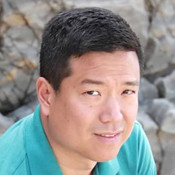You may have heard about the California Gold Rush and how many Chinese headed to California in search of a better life. And also about how Chinese rail workers helped build the transcontinental railroad.
But there’s another place where Chinese contributions are just starting coming to light.
CGTN’s Mark Niu reports.
Yosemite National Park is famous for its majestic sequoia trees and landmarks like El Capitan and Half Dome.
But few have heard of Sing Peak.
In July, a group of twenty two people, mostly Asian Americans, made a pilgrimage to the mountain, paying tribute to the man for whom it was named — Tie Sing– the former head chef for the U.S. Geological Survey.
In the late 1800’s and early 1900’s, Sing traveled on expeditions, preparing exquisite meals for cartographers, including some who would influence Congress to create the National Park Service.
“One of the famous stories is that he made wonderful sourdough biscuits. And to make the yeast rise, he packed it in the morning and put it next to the side of the mules so it would be kept warm as they were going to the next location,” Jack Shu, former California State Park superintendent said. “For me, as a backpacker and someone who looks at maps a lot, when you have something that’s named after a Chinese person, that’s very, very unique.”
For the past seven years, Shu has led the Sing Peak pilgrimage and organized a group of around 50 people to learn more about Chinese contributions to Yosemite.
Research by park ranger Yenyen Chan has brought to light that hundreds of Chinese workers helped build two important roads here, including one known as the Wawona-Washburn road.
“And they built it in the middle of winter from December of 1874 to April of 1875,” said Chan. “So four months to finish 23 miles of road using hand picks, shovels, and wheelbarrows. No drills or machines that we have today. And blasting powder.”
Stephanie Yee has come to Yosemite almost every year of her life and is just now learning about the work of the Chinese.
“It’s a source of pride and fascination because I never knew that they were involved in this area at all,” said Yee. “There aren’t a lot of stories about it.”
The Yosemite National Park Service is currently working on creating an interpretive sign that will contain details of how the Chinese built this original Washburn road. That’ll likely be a laminated plaque placed somewhere along the road within two years.
When the group journeys down the road, they’re still able to find evidence of Chinese craftsmanship in a number of rock walls.
“The park historian and park archaeologist looked at the rock wall and took a picture of it,” said Shu. “He showed us a picture of a rock wall in China. Same design, same kind of work. Very different from the kind of rock work done in Europe.”
“I think it’s a great way for Chinese who come here to realize that they have an important role in the early history of Yosemite National Park,” said Chan.
While the number of Asian and Chinese visitors appears to be on the rise, historically, it’s been low.
Park officials and pilgrimage organizers hope history will boost attendance while honoring those who helped ensure Yosemite would remain the wonder that it is.
 CGTN America
CGTN America

